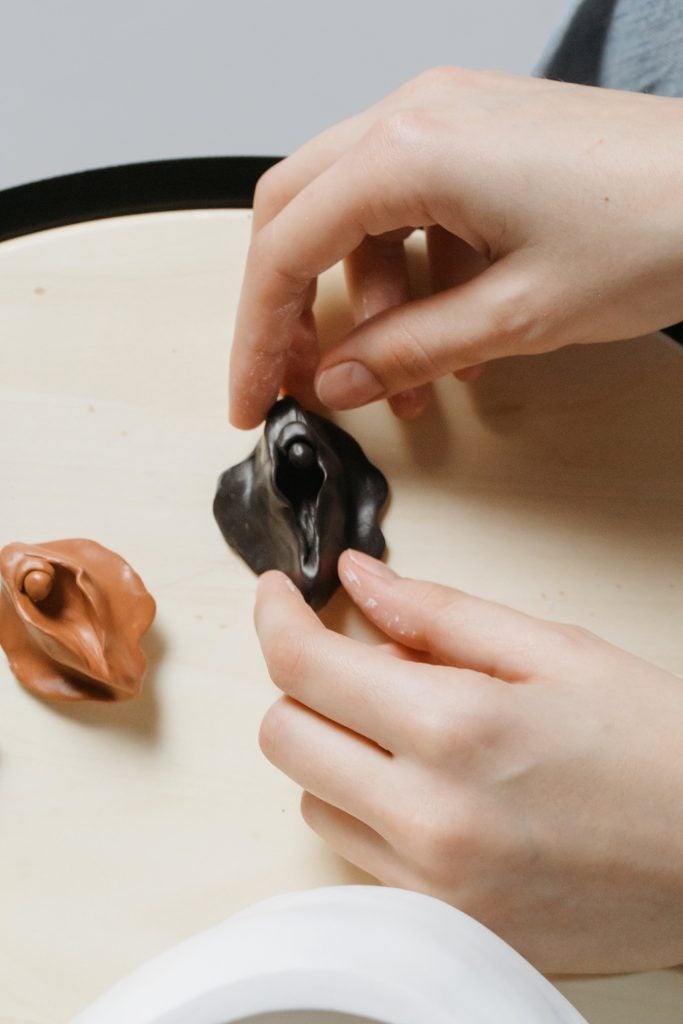
Table of Contents
What is Vaginoplasty?
Vaginoplasty is a surgical procedure meant to tighten the female pelvic floor muscles surrounding the vagina. The goal of the procedure is to give a woman better strength or control of these muscles, which can lead to greater satisfaction for both the female and her partner during sexual intercourse. The procedure was originally intended to fix genetic vaginal deformations or repair vaginal stretches and tears that are often the result of childbirth. Now, many women are also choosing to have the surgery for aesthetic reasons.1
Vaginoplasty, sometimes called “vaginal rejuvenation,” can be performed with slight adjustments depending on the desired outcome of the procedure and whether the surgery is medically necessary or purely cosmetic. One of the variations is called “perineoplasty.” In perineoplasty, the small patch of skin between the vagina and anus (the perineum) is altered along with the vaginal tissue, creating a different vaginal angle and often a tighter clitoral hood. Another variation is “re-virgination,” which repairs tears or stretches on the hymen to return the vagina to its “virginal” state.2 The ethics of re-virgination are often debated because of the religious and cultural significance of the hymen, and because an intact hymen is not always the sole indicator of one’s virginity. Vaginoplasty, in any of its forms, can also be easily combined with other vulvar cosmetic procedures, such as labiaplasty or G-Spot amplification.2 Labiaplasty involves the reshaping of the labia, and G-spot amplification is a procedure meant to increase the size and sensitivity of the section of the anterior wall of the vagina known as the Gräfenberg spot. Many females find it convenient to combine these types of surgeries with vaginoplasty so that they do not have to schedule two different procedures.
How is Vaginoplasty Performed?
A full vaginoplasty procedure takes about one to two hours. The surgery usually involves either pulling the pelvic floor muscles closer together, removing any loose excess skin and scar tissue, or a combination of the two. The end result is a tighter, restructured vagina that will ideally provide more friction and better pleasure during sex.3 Scarring can occur but should fade over time. Surgeons tend to be careful about placing incision sites in the natural folds of skin where they will be less noticeable. Patients undergoing vaginoplasty are typically kept under anesthesia or sedation during the procedure; most doctors will choose not to allow the patient to be awake in order to ensure their maximum comfort.1 The incisions can be made using a traditional scalpel method or by using lasers. Laser incisions are said to sometimes make the healing process easier than scalpel incisions, but the look and feel of the final outcome is generally the same between the two methods. A surgeon will decide which method to use depending on a patient’s specific needs.3
Recovery from Vaginoplasty

Recovery from vaginoplasty is relatively easy, but does require some planning and organization to ensure that the body heals properly. After a vaginoplasty procedure patients spend a few hours in the recovery room and then are cleared to go home within one day, provided there are no complications. The pain after surgery causes significant discomfort, but it can be treated with pain medication and should subside after a few days. Bruising and swelling of the incision site are common and last for one to two weeks. Patients are prohibited from having sexual intercourse, using tampons, or engaging in any other activity that involves penetration of the vagina for at least four to six weeks. Within one week of the surgery, patients are allowed to return to minimally strenuous work, and a full recovery is expected after about three months.1 This recovery period becomes lengthier when vaginoplasty is combined with other surgical procedures, such as labiaplasty. Doctors usually schedule post-operation check-ups to make sure the healing process is going as expected. It is common for doctors to recommend that patients to do vaginal exercise therapy in the form of Kegel exercises to strengthen the newly formed muscles and prevent future complications.3
Risks
The risks associated with vaginoplasty are similar to many other common surgeries and include infection, bleeding, severe scarring, and blood clots. However, these risks are typically rare as long as the patient is in good health to begin with. In fact, the procedure is considered to have less health risks than pregnancy.1 Other risks include nerve damage, vaginal collapse, and unbalanced lubrication, although these are not highly likely with a skilled surgeon.3 Some small scars are normal and should fade over time as long as the patient observes the necessary steps in the recovery process. Should one decide to have vaginoplasty done, the surgeon would be able to discuss in detail the risks associated with that particular person’s procedure.1
The most common —and possibly most important— risk to consider when deciding to get vaginoplasty is that the patient may be unsatisfied with the outcome of the surgery. Sometimes the procedure can result in the vagina not being as tight as the patient expected, or even so tight that the patient cannot insert tampons or have pleasurable sex with a partner. In these cases additional therapy or surgical procedures may be needed to reach the original goal.3 The best way to avoid being disappointed with the results of vaginoplasty is to carefully think and plan. First, one should think about their reasons for wanting the procedure and determine whether the surgery will actually solve the problem at hand. Next, a surgeon should be cautiously selected. It is wise to get a few opinions or consultations before deciding, and to choose the surgeon with the best preparation and experience with the procedure. It is highly important for patients to be completely honest with their surgeon about their expectations, ask plenty of questions, and fully understand the procedure before it begins.1,3 When both doctor and patient are on the same page, it is more likely that the patient will be satisfied with the outcome.
Cost
The average cost of a vaginoplasty procedure is within the range of 4,500 to 8,500 USD. Often times, if vaginoplasty is combined with another vulvar surgery such as labiaplasty or G-spot augmentation, surgeons will offer the combined procedures at a lower price than if they were done separately.1 Another cost to consider is the cost of pre- and post-operation appointments with a surgeon. Some patients decide to have vaginoplasty done in a country other than their own in order to take advantage of a lower cost. However, this option is not always convenient and should be carefully planned in order to avoid miscommunications and scheduling complications. A patient seeking surgery abroad should do significant amounts of research before making the decision.3 Cost should never be the only factor when deciding where and how to have an operation. Making changes to the genitals can have a large impact on the confidence of a female, so it is not wise to choose a surgeon or location that is not well trusted just because it is the cheaper option.1
Reasons to Get Vaginoplasty

Vaginoplasty originated as a surgery for females with vaginal deformations, vaginal injuries, or serious vaginal stretching due to childbirth. Now, more women are taking advantage of vaginoplasty for aesthetic purposes.3 After childbirth or as a female ages, the tissue in and around the vagina may become loose, the pelvic floor muscles can become weak, and the vagina may feel wider. These natural changes can have a negative effect on a female’s sex life if they cause her or her partner to feel less sensation during sex, or if the female feels self-conscious about her body. Vaginoplasty is meant to restore the vagina to its younger, stronger look and feel, which can make sex feel better and boost sexual confidence. Anyone who is healthy enough for surgery can have vaginoplasty done, so some women who have never experienced vaginal damage may choose to have the operation, simply because they desire a change in the look or feel of their vagina.1
Reasons Not to Get Vaginoplasty
While vaginoplasty can be a good option for some females, it is not the only option. Kegel exercises and vaginal exercise inserts can also be used to strengthen pelvic floor muscles. Some vaginal creams are available that are intended to cause swelling of the vagina, making it feel tighter and stronger. These creams can be used over a period of time to gradually improve the sensations of sex, but there is not guarantee that every female will be satisfied with the results. The main downside to these alternatives is that their results are not as quick or permanent as the results of vaginoplasty, but they are much cheaper than having an operation. It is recommended that these alternatives be tried first before turning to surgical procedures.
Vaginoplasty is not recommended for women who are pregnant or plan to have children. If a female has the operation prior to giving birth, childbirth could be more difficult and painful, and the effects of childbirth on the vagina are likely to negate the changes made by vaginoplasty.
Vaginoplasty and other cosmetic genital procedures should not be viewed as a way for a person to make their body look “normal”. The size, shape, color, and feel of the vulva significantly vary from one person to the next, and it is impossible to pinpoint exactly what a “normal” vagina looks like. In addition to social norms, pornographic depictions of genitals often create unrealistic ideals of how the body should look and how well partners are able to satisfy one another during sex, which can have a negative effect on the sexual self-confidence of a female or her partner. Ideally, all females (and males) should learn to love their bodies the way they are and appreciate themselves for what they can do with their body rather that what it looks like. It is possible that if a female has a strong dislike for the appearance of her genitals, this dislike could be a sign of deeper self-esteem issues that cannot be fixed with surgery. These issues should be fully addressed and resolved before a female considers undergoing any cosmetic procedure.
A female should not make the decision to have vaginoplasty solely based on the opinion of her partner. Sometimes comments from a partner can make a female feel self-conscious about her body or her ability to satisfy her partner sexually. However, vaginoplasty is a procedure that has very personal effects on a female. The decision to alter one’s body in such a way should be made independently and only after seriously weighing the pros and cons. Vaginoplasty should not be done solely to satisfy the preferences a partner. If a female is content with the look and feel of her genitals, her partner should be too. A healthy relationship between sexual partners should include support and respect for the personal well-being of the people involved, no matter what each partner’s insecurities may be. Similarly, the surgery should not be a way to “fix” a relationship. There are plenty of other alternatives for spicing up a couple’s sex life and bringing them closer together. If a relationship is failing, it is likely that there are problems occurring that are much deeper than the sexual performance or appearance of one of the partners. These problems should be identified and communicated before turning to surgery because if they are not resolved, they are likely to return after the procedure.1
Finally, while many women claim that vaginoplasty has been effective in their sex lives, there is actually no guarantee that the procedure will significantly improve one’s sexual experience. More research is being done to assess the success of vaginoplasty in increasing the sexual satisfaction of females and their partners.2 This and the other aforementioned pros and cons of the procedure should be deeply considered before a female decides to have vaginoplasty or any other cosmetic surgery.
References
1. “Vaginoplasty.” Vaginoplasty. Labiaplastysurgeon.com, n.d. Web. 20 Oct. 2015.
2. “Women’s Health Care Physicians.” Vaginal “Rejuvenation” and Cosmetic Vaginal Procedures. American Congress of Obstetricians and Gynecologists, n.d. Web. 20 Oct. 2015.
3. “Vaginoplasty (Vaginal Tightening Surgery) in London & UK.” Vaginoplasty London. Health Centre UK, n.d. Web. 20 Oct. 2015.
Last Updated 12 November 2015.
